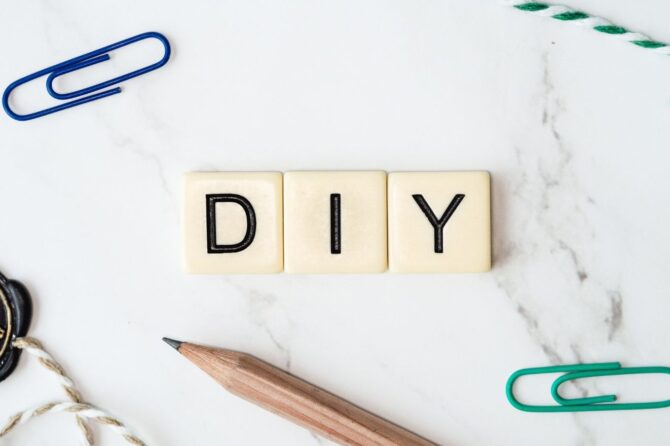Freelancing has exploded in popularity over the past decade. An estimated 57 million Americans currently freelance, comprising over 35% of the US workforce. The freedom and flexibility of freelancing is appealing but also comes with the responsibility of managing your own time and workflow. As a freelancer, maximizing your productivity is essential to professional success and maintaining a sustainable career. Hence you should learn about the best management tools you can use for your freelancing projects.
Table of Contents

When we talk about productivity, what exactly do we mean? For freelancers, productivity is about working efficiently and avoiding distractions to complete the most important tasks that will move your business forward. The aim is to get more high-quality work done in less time. Dramatically improving productivity enables you to take on more clients and projects, increase your income, and achieve an enhanced work-life balance.
This article will showcase five powerful tools that can potentially boost your productivity as a freelancer by 10X or more. With the right management and workflow optimization, you can accomplish in one day what might have previously taken a week or longer. From time tracking to task prioritization and automation, implementing these solutions will enable you to work smarter, maximize your billable hours, and accelerate your freelancing career. Let’s get started!
Tool #1: Time Tracking Feature in Management Tools
Time tracking is one of the most effective ways for freelancers to boost productivity. By closely monitoring how time is spent on client projects, freelancers can identify areas of wasted time and make adjustments to work more efficiently.
Some popular time-tracking tools include Toggl, Harvest, Timely, TSheets, and Clockify. These tools allow you to do things like:
- Track time automatically or manually
- Generate reports to analyze where time is spent
- Set up project budgets and track time against them
- Integrate with other tools like invoicing software
- Track billable and non-billable time
The main benefits of time tracking for freelancers include:
- Improved time management and productivity – With detailed data on where time is spent, you can identify productivity killers and adjust your work habits accordingly. This allows you to get more done in less time.
- Better project estimates – By tracking time on projects, you build up a knowledge base on how long certain tasks take. This enables you to provide more accurate estimates and quotes to clients moving forward.
- Invoicing made easy – Time tracking software integrates directly with invoicing so you can quickly generate invoices based on billable hours worked.
- Identify profitability – Knowing exactly how long you spend on client work enables you to analyze the profitability of projects and clients. You can identify unprofitable relationships to avoid.
By implementing a time-tracking system, freelancers can achieve huge gains in productivity and efficiency. The detailed data provides insights that simply aren’t possible without tracking time closely. It’s one of the most fundamental tools freelancers should use to maximize productivity.
Tool #2: Project Management Feature in Management Tools
Managing multiple projects and tasks is crucial for freelancer productivity. The top project management tools like Asana, Trello, and Basecamp provide features to help you stay organized, and on top of tasks, and enable seamless collaboration.
These project management platforms allow you to create projects, break them down into tasks and subtasks, set due dates, assign tasks to yourself or team members, comment and discuss tasks, and gain visibility into what needs to be completed. Their interactive boards/lists allow you to visualize and prioritize your workflow.

Key features include:
- Task management with assignees, due dates, checklists, and attachments
- Calendar view to see deadlines
- Progress bars and status indicators to view task completion
- Comments/messaging threads for collaboration
- Customizable workflows and boards
- Time tracking on tasks
- File sharing capabilities
- Mobile apps so you can manage projects on-the-go
These tools provide structure, clarity, and focus so you don’t waste time determining what to work on next. Their collaboration capabilities allow you to get input from clients/team members directly within tasks. This streamlines work and keeps everyone on the same page.
By implementing a project management system, you can significantly boost productivity by staying organized, meeting deadlines, and collaborating efficiently. They give you a bird’s eye view of your workload and a systematic process for executing tasks. With these tools, you can handle multiple projects and clients smoothly and effectively.
Tool #3: Communication Feature in Management Tools
Effective communication is essential for productivity. As a freelancer, you likely need to communicate with clients, team members, and others frequently. Streamlining this can save significant time and mental energy.
Email and Chat Tools
- Consolidate your email accounts and enable focused or priority inboxes to filter out noise. Unsubscribe from nonessential lists.
- Use an email client like Gmail or Outlook for enhanced organization and scheduling capabilities.
- Chat tools like Slack or Microsoft Teams allow for easy communication with clients and teams. Create specific channels to prevent irrelevant notifications.
- Turn off non-priority notifications to avoid distractions. Schedule email and chat breaks rather than having them open continuously.
Streamline Communication
- Have set hours or availability windows so clients know when you will respond. Communicate clearly.
- Batch or schedule outgoing communications during focused work blocks.
- Let clients know your preferred contact methods and when you will get back to them to set expectations.
Avoid Context Switching
- Checking communications constantly interrupts work and causes context switching, which severely impacts productivity.
- Set your status as “Busy” or “Offline” during deep work time blocks.
- Check emails or messages just 2-3 fixed times per day for 15-30 minutes each. Schedule communication blocks on your calendar.
- By streamlining communication protocols and tools, you can stay focused and get more high-quality work done.
Tool #4: Automation Feature in Management Tools
Automating repetitive and mundane tasks is one of the most effective ways to boost productivity as a freelancer. Tools like Zapier, IFTTT, and Integromat allow you to set up automation and workflows to streamline your work.
Some examples of automation for freelancers include:
- Automatically sending new contact form submissions to your CRM
- Adding new email subscribers to your email list
- Posting content to social media on a schedule
- Backing up important files to cloud storage
- Entering data into spreadsheets
By taking mundane tasks off your plate, you free up time and mental energy to focus on client work that requires your expertise. The key is identifying repetitive tasks and workflows that can be automated.
Try to funnel all your systems into one central automation tool. Setting up two-way automation between your project management system, CRM, email marketing platform, and other tools allows you to create an automated workflow ecosystem. Information flows seamlessly between systems without any manual work on your end.

Leveraging automation is one of the most effective yet underutilized ways for freelancers to reduce busy work and maximize productivity. Start by listing tasks that take up your time and research automation tools that could eliminate them.
Tool #5: Focus-Centric Feature in Management Tools
Focus is critical for maximizing productivity as a freelancer. With so many potential distractions at home, focus tools help create an environment conducive to deep, concentrated work.
Block Distractions
Using a website blocker like Freedom prevents you from accessing distracting sites that reduce productivity. Set it to block social media, email, YouTube, news sites, etc. Freedom allows you to lock yourself out of distractions for a predetermined time. This helps create long stretches of focused work.
Remove Physical Distractions
Declutter your workspace and hide your phone to remove physical distractors. Work in a quiet, comfortable space devoted to work. Noise-cancelling headphones can also help drown out auditory distractions.
Promote Deep Work
Deep work is a powerful, concentrated effort on meaningful tasks without distraction. Promoting deep work increases the quality and quantity of work you can accomplish. Try techniques like time blocking, turning off notifications, closing extra browser tabs, and setting goals. The more you can minimize disruptions and enter a state of flow, the better your focus will become.
Focus tools empower freelancers to direct their attention and avoid distractions. This leads to greater productivity and the ability to deliver amazing work. Removing disruptions and promoting deep work allow you to fully leverage your time and talents.
Maximize Usage
To get the most out of these tools for boosting productivity, you need to fully integrate them into your freelance workflow. Here are some tips:
- Combine tools: The tools work best when used together as part of a comprehensive workflow. For example, use your time tracker along with your project management system. Automate what you can between tools.
- Establish habits and processes: Build consistent habits around using these tools so they become second nature. Create standard operating procedures for yourself. Identify key tasks to optimize your workflow.
- Get over the learning curve: All new tools have a learning curve. Push past the initial challenges and frustrations. Watch tutorials, take courses, or hire a coach if needed. The investment will pay off.
- Iterate and improve: Continuously evaluate your workflow and tools. Are you maximizing each tool? What can be improved? Regularly tweak your processes.
- Stick with it: Commit to using these tools, even when you’re busy. The more you use them, the more natural they’ll become. Make them a core part of how you work.
The most successful freelancers use tools to work smarter. But you have to push past the initial hurdles and fully integrate them into your daily habits and processes. Do this, and you’ll be surprised at the productivity gains.
Measure Results
Measuring results is crucial for optimizing and improving productivity over time. After implementing new tools and processes, you’ll want to set metrics to quantify your improvements.
- Set specific productivity metrics like tasks completed per hour, projects delivered on time, or billable hours per week. Compare these metrics before and after making changes to see the impact.
- Tools like time trackers and project management software make it easy to quantify productivity gains. Review reports to see trends over time.
- Don’t just measure once. Optimization is an ongoing process. Regularly review your metrics to find new areas for improvement.
- Consider qualitative factors too like work satisfaction, stress levels, and work-life balance. The goal is to boost productivity without burnout.
- Get feedback from clients on project quality and communication. This ensures productivity gains don’t compromise service.
- Keep tweaking and refining your process. There’s always room for improvement. Strive for continuous incremental productivity boosts over time.
Setting goals, tracking progress, and regularly optimizing is key. With the right metrics, you can accurately quantify the impact of new tools and processes on freelance productivity.
Additional Tips
Boosting productivity as a freelancer goes beyond just using the right tools. Here are some additional tips that can help take your productivity to the next level:
Take Breaks
It’s important to take regular breaks when working long hours. Stepping away from your desk, even for just 5-10 minutes, gives your brain a chance to recharge. Go for a walk, grab a snack, or do some light stretches. You’ll return to work feeling more focused.
Prioritize Health
When you’re overwhelmed with work, it’s easy to neglect exercise, sleep, and healthy eating. But maintaining your health improves mental clarity, energy levels, and focus. Try to work in at least 30 minutes of exercise per day. Get adequate sleep each night. And fuel up with nutritious meals and snacks.
Create a Dedicated Workspace
Having a clean, distraction-free workspace helps maximize productivity. Make sure you have a comfortable chair and desk setup. Minimize clutter. And try to work in an area without too many distractions.
Learn When You’re Most Productive
Pay attention to when you have the most energy and focus each day. For some, this is morning. For others, it’s late at night. Schedule your most challenging work during your peak productivity hours.
Outsource Non-Essential Tasks
Consider delegating or outsourcing tasks that aren’t the best use of your time, like bookkeeping, data entry, marketing, etc. This frees you up to focus on billable client work instead.
Further Resources
- Books: Deep Work by Cal Newport, The 7 Habits of Highly Effective People by Stephen Covey
- Podcasts: The Productivity Show, The Tim Ferriss Show
- Online Courses: Coursera, Skillshare, Udemy productivity skills courses
Implementing the right tools combined with productivity-focused habits and lifestyle choices can truly help any freelancer achieve dramatic gains in productivity and success.
Management Tools… Keep Evolving
As a freelancer, boosting your productivity is crucial to increasing your income and achieving your goals. By implementing the top productivity tools and techniques covered in this guide, you can easily increase your output and efficiency by 10x or more.

The five key categories of tools highlighted include time tracking, project management, communication, automation, and focus. Using time trackers ensures you have visibility into how you spend your hours and can identify areas for improvement. Project management systems like Asana enable you to optimize workflows, collaborate seamlessly, and meet deadlines. Communication channels like Slack facilitate connecting with clients and streamlining work. Automation through Zapier, IFTTT, and AI scheduling frees you from mundane tasks. And focus tools like Freedom block distractions so you can get into the zone.
While simply adopting these tools won’t inherently make you more productive, maximizing their usage and capabilities tailored to your needs will undoubtedly boost your performance. Measure your productivity before and after implementing these tools to quantify your improvements. Experiment to determine which solutions work best for your freelance work style and continue iterating and enhancing your productivity stack over time.
The key is to commit to leveling up your freelance business in terms of organization, efficiency, and focus. By doing so, you can provide even more value to your clients and reap the rewards through higher earnings and more rewarding work. Don’t settle for mediocre productivity – take your freelance career to the next level today.




